Have you ever wondered what stories the ancient stones of Nepal could tell? Located in the stunning Himalayas, Nepal is way more than just a beautiful place; it’s a treasure chest of history, culture, and spirituality.
This captivating country features a range of historical monuments that showcase its rich heritage and architectural brilliance. From the lively vibes of Kathmandu to the peaceful temples in Lumbini, each site has a distinct story, inviting visitors to journey back in time.
With over 1,000 historical monuments, Nepal has plenty to offer, including many UNESCO World Heritage Sites. These sites are more than just pretty structures; they reflect the rich traditions and beliefs that have shaped Nepalese life for centuries.
Their value goes way beyond aesthetics; they are essential to understanding the country’s cultural identity and history. Each monument, whether it’s a detailed temple or an impressive palace, highlights the creativity and spiritual dedication of the builders.
Explore 9 Must-See Historical Monuments of Nepal Through This Blog
Join us on an exciting virtual trip as we visit nine of Nepal’s most iconic historical monuments! Get ready to be swept away by stories of gods, kings, and ancient cultures. These incredible sites still inspire wonder in both locals and tourists. Let’s explore the heart of Nepal through its stunning historical landmarks!
1. Kathmandu Durbar Square
Kathmandu Durbar Square, or Hanuman Dhoka, is a historical treasure right in the center of Kathmandu, Nepal. It started being built back in the 3rd century during the Licchavi era, but the majority of the buildings we admire today were constructed by the Malla kings from the 12th to the 18th centuries.
This square was the royal palace for those kings and showcases the incredible history and architectural talent of Nepal. Kathmandu Durbar Square is truly unique because of its detailed wood carvings and the impressive collection of over 50 temples that highlight Newar architecture.

Notable among them are the Kumari Temple, which honors the living goddess, and the grand Taleju Temple. This square has seen a lot of important historical happenings, from royal coronations to vibrant festivals that still breathe life into this ancient area.
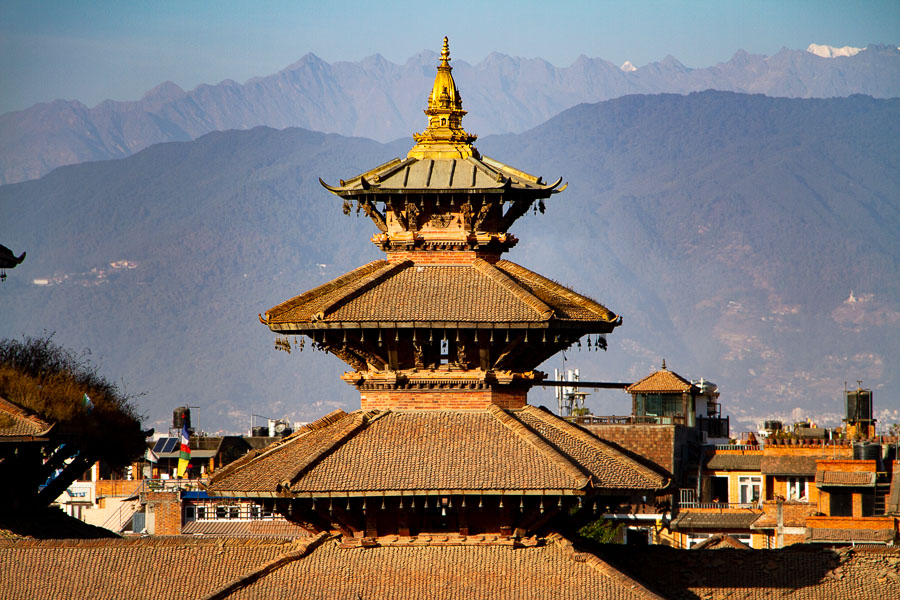
Despite the heavy damage from the 2015 earthquake, restoration efforts have been key in keeping its beauty intact. If you’re planning a trip to Kathmandu Durbar Square, the ideal time to go is between September and November or from February to April.
The weather during these months is just right for wandering around. You can easily walk to the square from different areas in Kathmandu, and if you’re coming from a bit further out, taxis are super convenient.
Once you arrive, enjoy the vibrant scene, check out the local crafts, and savor some traditional food from the nearby eateries.
Read – https://itihaaskikhoj.in/museums-in-india-with-the-most-exquisite-collections/
2. Patan Dubar Square
Patan Durbar Square is an amazing historical spot right in the center of Lalitpur, Nepal. It was built during the Malla dynasty, which was prominent from the 12th to the 18th century, showcasing the fantastic craftsmanship of Newar builders.
Its history goes back to the Licchavi period (3rd to 9th century AD), but it really thrived under the Malla kings, especially during the time of King Siddhi Narasingh Malla in the 17th century.

Patan Durbar Square stands out because of its amazing array of temples and palaces, each featuring detailed carvings and sculptures that showcase Hindu and Buddhist influences. You can find impressive buildings like the Krishna Mandir and Bhimsen Temple, each with its own unique tale told through art and design.
It’s a fantastic place for visitors to dive into the vibrant cultural history of this UNESCO World Heritage Site. The perfect time to check out this historical monument, Patan Durbar Square is during the cooler months, specifically from September to November or February to April, when the weather is just right for exploring.
Getting to Patan is super easy too; it’s only about 5 kilometers from Kathmandu, so you can hop in a taxi or take a quick drive. Plus, there are public buses that run between the two places, so it’s accessible for everyone.
Also Read – https://itihaaskikhoj.in/15-stunning-tourist-attractions-in-india/
3. Pashupatinath Temple
Pashupatinath Temple is a highly respected Hindu temple in Nepal, honoring Lord Shiva. Thought to have been founded in the 5th century, the temple complex features a mix of architectural styles, with the current pagoda design constructed in the 17th century by King Pratap Malla.
This holy place is important not just for its spiritual value but also as a UNESCO World Heritage Site, drawing in thousands of visitors and pilgrims annually. Pashupatinath is one-of-a-kind, thanks to its location by the Bagmati River, where the themes of life and death intertwine.
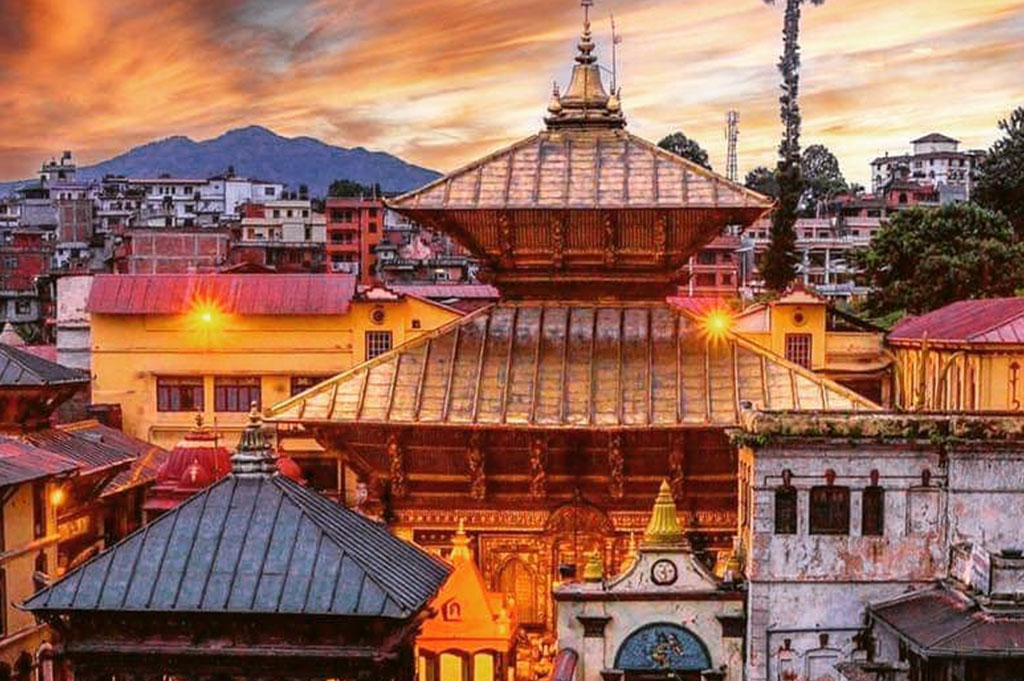
The temple is famous for its lively ceremonies, especially during big festivals like Maha Shivaratri, when people come together for a night of prayers. It’s a perfect time to experience the temple’s spiritual energy. For the best experience at Pashupatinath Temple, aim to visit from March to May or September to November when the weather is pleasant.
It’s super convenient to get there, just 5 kilometers from Kathmandu’s city center. You can easily grab a taxi or hop on a local bus, and you’ll be there in about 15 minutes. Definitely a great spot to explore Nepal’s historical treasures!
4. Janakpur
Janakpur, also called Janakpurdham, is a lively city rich in history and spirituality, situated roughly 225 kilometers southeast of Kathmandu. It’s famous for being the birthplace of Goddess Sita, a key character in the Ramayana epic, making it a significant place in Hindu mythology.
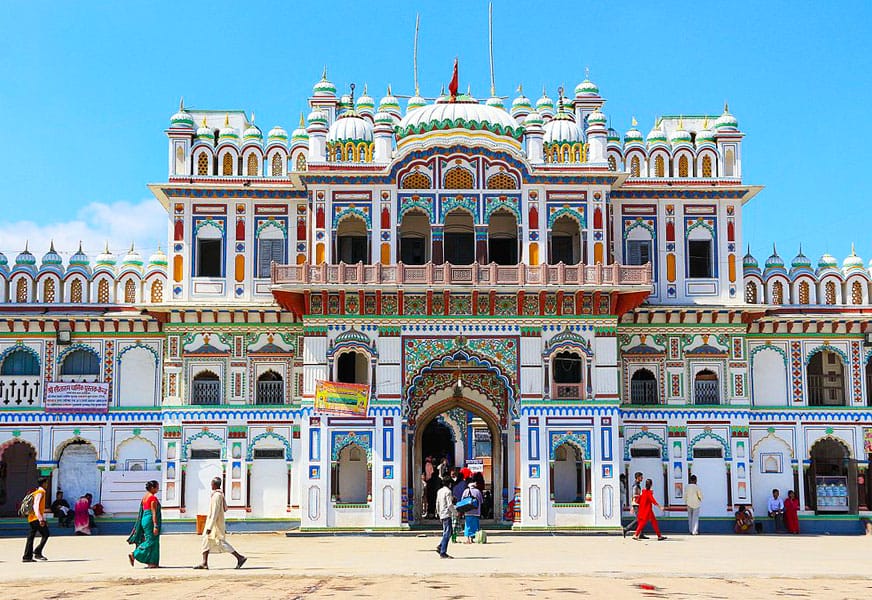
Once the capital of the ancient Mithila Kingdom, ruled by King Janak, Sita’s dad, Janakpur is now a cultural center for Maithili language and traditions.
In the center of Janakpur, you’ll find the impressive Janaki Mandir, a beautiful temple honoring Sita. Constructed in the late 1800s, this architectural gem features detailed carvings and gorgeous domes that attract thousands of visitors annually.
More than just a spot for prayer, the temple represents Janakpur’s rich history and its ties to timeless stories of love and courage.

Janakpur is well-known for its lively festivals, especially Vivah Panchami, which honors the wedding of Rama and Sita. The city boasts more than 70 temples and a bunch of sacred ponds, making it a top spot for anyone keen on historical sites in Nepal.
With its energetic atmosphere and strong traditions, Janakpur invites everyone to discover its fascinating stories and spiritual depth.
5. Mustang Caves
The Mustang Caves, known as the Sky Caves, are one of the coolest historical sites in Nepal. Carved into the steep cliffs of the Mustang District, these caves have been around for over 2,000 years and were part of the ancient Kingdom of Lo.
Imagine how these caves used to be homes and burial spots for the early people, providing a safe haven from bad weather and conflicts. They’re located about 155 feet above the valley, giving a great view of the calm Kali Gandaki River below.

It turns out that these caves have been used for all sorts of things over the years, according to archaeologists. They originally functioned as burial chambers back in 1000 BC. Later on, during some turbulent times, families took shelter there, converting the caves into stacked homes.
By the 1400s, they transformed into peaceful meditation rooms decorated with gorgeous murals and artifacts that highlight both Buddhist and Bon cultures.
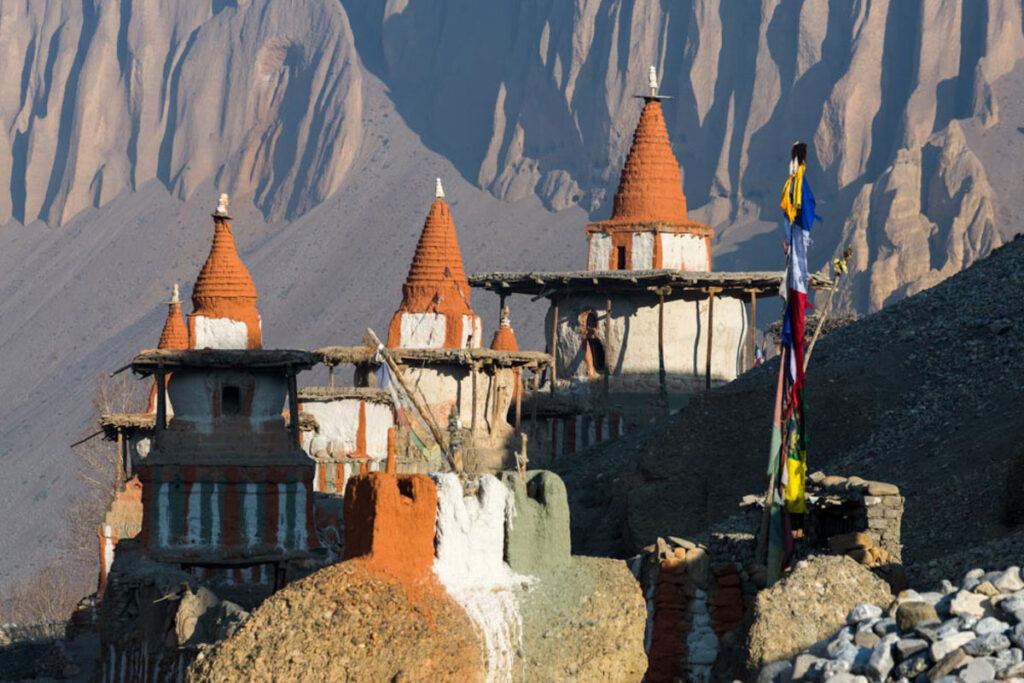
Visiting the Mustang Caves today gives you a peek into the rich history of Nepal. You’ll find ancient artifacts and even human remains that reveal what life was like in these remote highlands.
The caves stand as a tribute to the resilience and creativity of the people who once thrived in this rugged area, making them a must-visit for anyone interested in Nepal’s historical treasures.
6. Swayambhunath Stupa
Swayambhunath Stupa, or as many like to call it, the “Monkey Temple,” is an amazing place located on a hill with a great view of Kathmandu. This sacred area dates back to the 5th century and is one of the most significant historical sites in Nepal.
Climbing the 365 steep steps to the stupa, you’ll meet some cheeky monkeys that make the hike even more entertaining. According to local legend, these monkeys are said to be the descendants of lice from the bodhisattva Manjushri’s hair, who played a crucial role in shaping the Kathmandu Valley.

At the top of the hill, the stunning stupa rises high, decorated with colorful prayer flags and the famous Buddha eyes painted on its dome. These eyes represent wisdom and compassion, keeping an eye on everyone as they turn prayer wheels and say their prayers. The area around it is filled with smaller shrines and temples, each one steeped in history and spirituality.
Swayambhunath isn’t just a religious site; it’s a lively cultural hotspot where both locals and visitors dive into the spiritual vibe of Nepal. The views of Kathmandu from this spot are absolutely stunning, making it an ideal place to soak in the beauty of the country and reflect. Visiting Swayambhunath is an experience you won’t forget, as it really ties you to Nepal’s deep-rooted heritage and vibrant spirit.
7. Changu Narayan Temple
Changu Narayan Temple, located on a calm hill in Bhaktapur, offers a fascinating insight into the rich history of Nepal. Recognized as the oldest temple in the country, it dates back to around 325 A.D., making it a significant spot for both history enthusiasts and those seeking spiritual connection.
This temple, dedicated to Lord Vishnu, the guardian of the universe, serves as both a place of worship and an architectural wonder, showcasing the beautiful craftsmanship from the Lichhavi period.

When you get close to Changu Narayan Temple, you’ll notice the amazing carvings and sculptures that decorate its two-tiered pagoda. The temple area is packed with artistic gems, like a breathtaking statue of Garuda, Vishnu’s heavenly ride, which goes all the way back to the 5th century.
You’ll also find smaller shrines for different deities, showcasing the rich spiritual diversity of Nepal. Visitors often get lost in the peaceful atmosphere and the gorgeous nature that surrounds the temple. It serves not only as a venue for spiritual practices but also as a living museum showcasing ancient inscriptions and artwork.
Being a UNESCO World Heritage Site, Changu Narayan Temple encourages everyone to explore its holy grounds and connect with the colorful history of Nepal.
Read – https://itihaaskikhoj.in/historical-monuments-of-kerala/
8. Bhaktapur Durbar Square
Bhaktapur Durbar Square is an amazing historical spot right in the center of Bhaktapur, Nepal. It used to be the royal palace for the Malla kings and is now a UNESCO World Heritage Site that highlights Nepal’s incredible cultural heritage and stunning architecture.
Established in the 13th century by King Jayasithi Malla, this square was the hub of political and religious activities for many years. As you make your way through Bhaktapur Durbar Square, you’ll be mesmerized by the gorgeous temples and palaces, each with its own tale from the past. The 55-Window Palace looms large, featuring detailed wood carvings and golden highlights.

Close by, the Golden Gate impresses with its beautiful craftsmanship, while the Lion’s Gate is flanked by striking stone statues that guard the way in.
The square isn’t just visually stunning; it’s a dynamic hub where locals partake in their daily customs and celebrations. Temples like Nyatapola and Vatsala highlight the incredible artistry of Nepal, boasting impressive heights and detailed carvings. Despite the setbacks from earthquakes, Bhaktapur Durbar Square continues to symbolize the strength and pride of the Nepali community.
If you’re exploring Nepal, you definitely need to visit this iconic spot to soak in its historical significance.
9. Boudhanath Stupa
Just outside Kathmandu, Nepal, you’ll find Boudhanath Stupa, a breathtaking symbol of peace and spirituality. It’s one of the largest stupas in the world and a UNESCO World Heritage Site, making it a hotspot for Tibetan Buddhism.
Every year, it welcomes thousands of pilgrims and tourists. The impressive white dome and soaring spire are topped with the all-seeing eyes of Buddha, overseeing the vibrant square below.
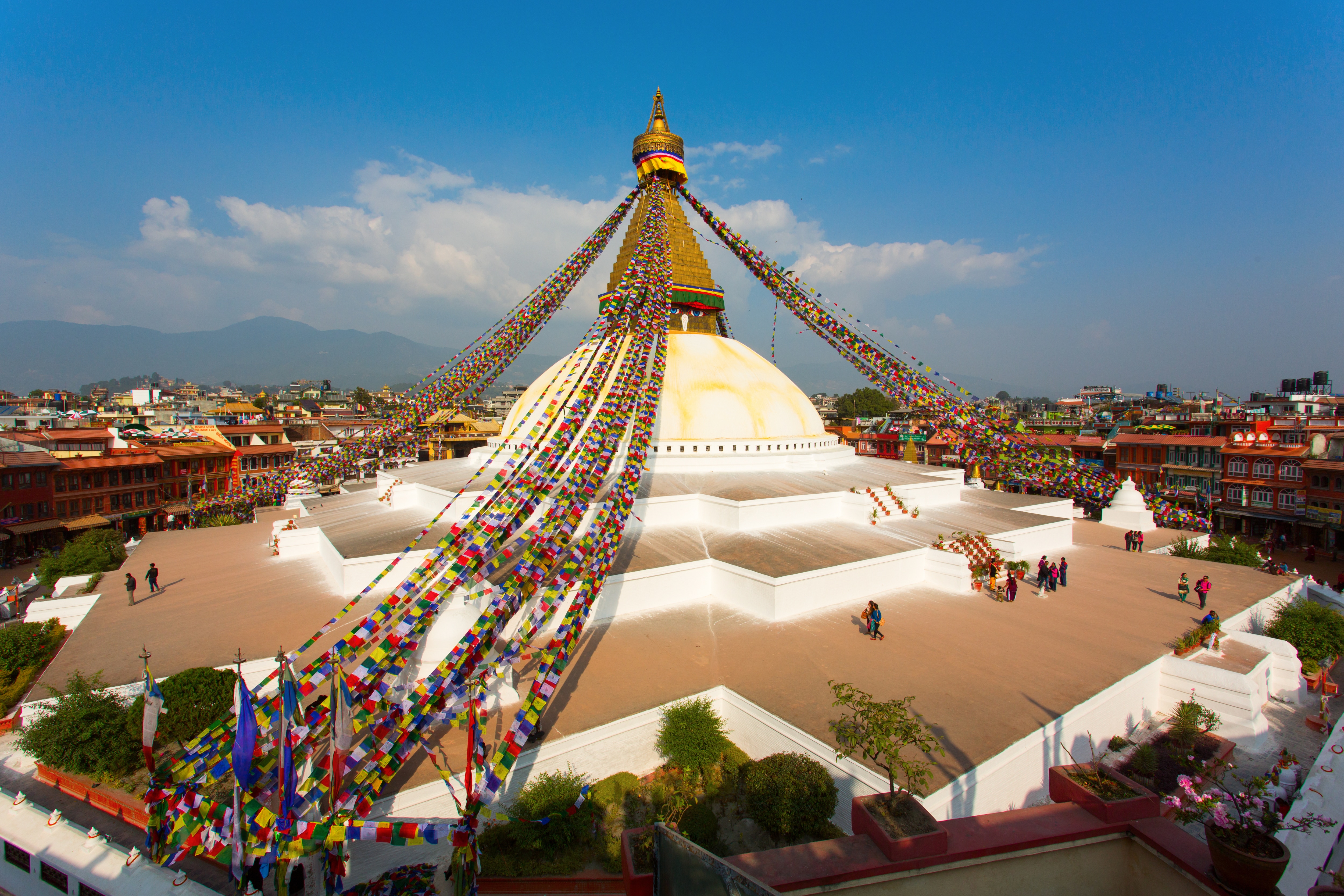
Built in the 5th century, Boudhanath Stupa has a fascinating blend of history and legend. Legend has it that a Tibetan king constructed the first stupa as a way to seek forgiveness. The current version, which was completed in the 14th century, serves as a symbol of the Buddha’s journey to enlightenment, with its design reflecting the elements of earth, water, fire, air, and space.
The stupa is encircled by colorful prayer flags and many monasteries, making the whole area feel alive with spiritual energy.
When visitors come to Boudhanath Stupa, they often take part in a ritual known as “kora,” where they walk around the stupa while chanting mantras like “Om Mani Padme Hum.” The serene atmosphere and beautiful architecture make this place a must-visit historical site in Nepal, giving a special insight into the nation’s vibrant cultural and spiritual heritage.
Conclusion
Visiting these nine iconic historical monuments in Nepal is an awesome way to step into the past and experience the country’s rich culture and impressive architecture. Each site has its own tale to tell, giving visitors a chance to connect with Nepal’s history while soaking in its vibrant atmosphere. If you’re interested in spirituality or just love learning about history, these monuments are definitely highlights of your trip to this gorgeous land. Check out our website for more such blogs!
